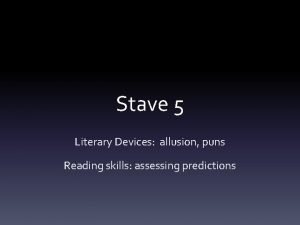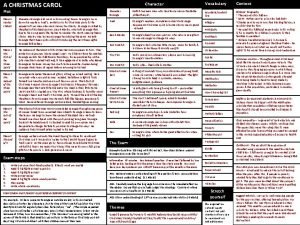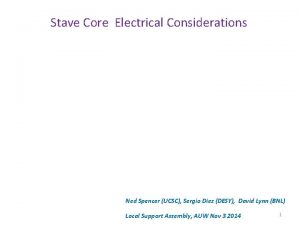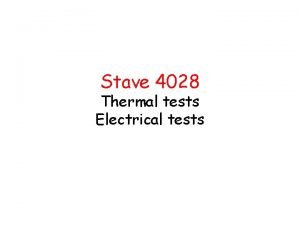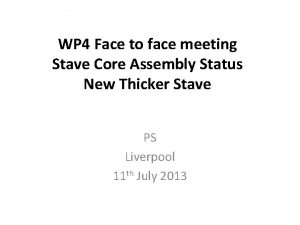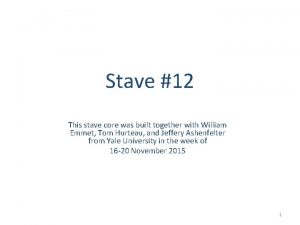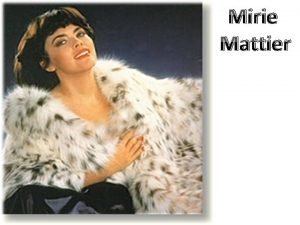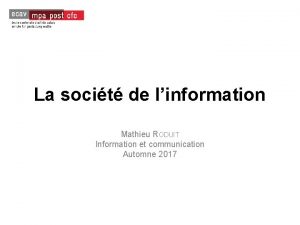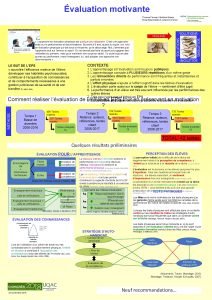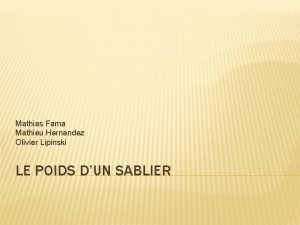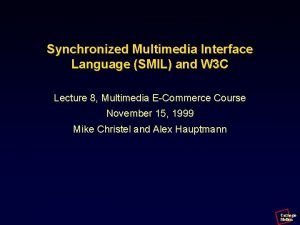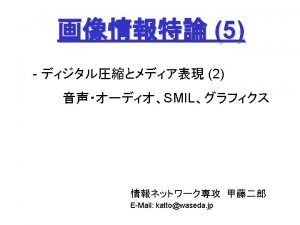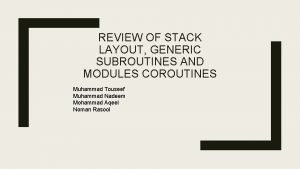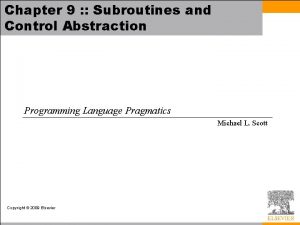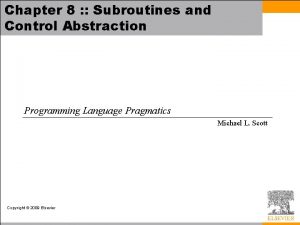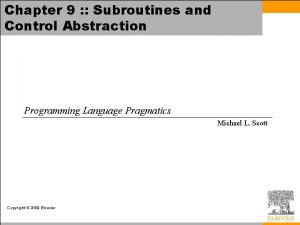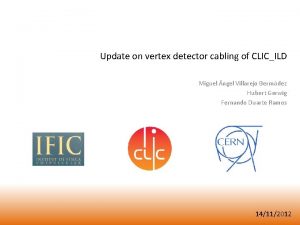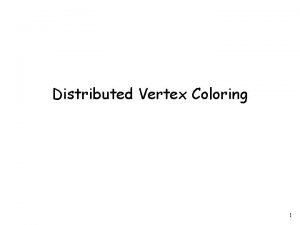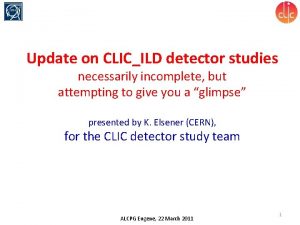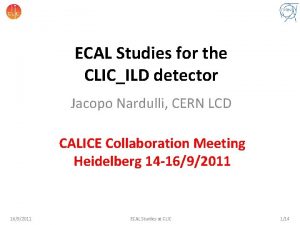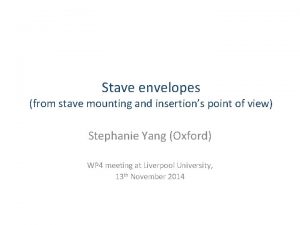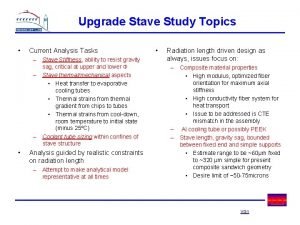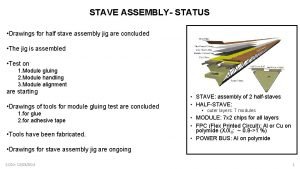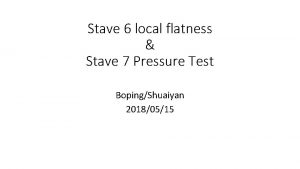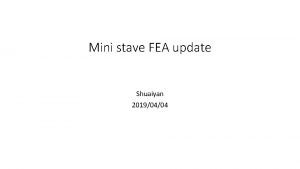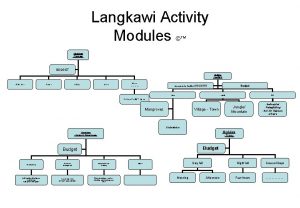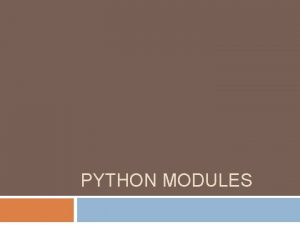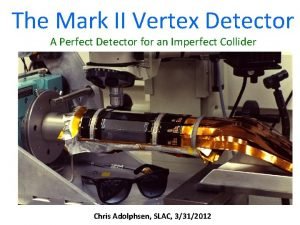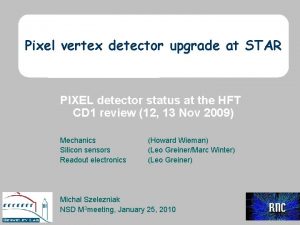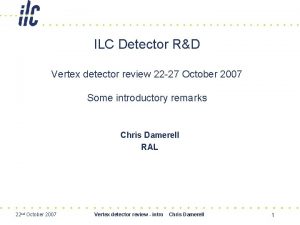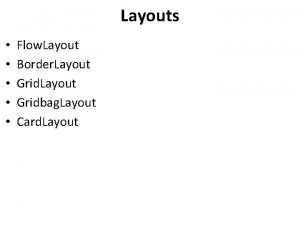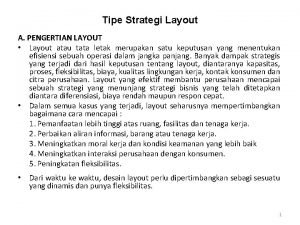CLICILD vertex detector modules and stave Layout Mathieu









































- Slides: 41

CLIC_ILD vertex detector modules and stave Layout Mathieu Benoit f cts o e p s ga erin rs e n i ng cto on e ex dete p o ert ksh wor e CLIC v i n i m th

Introduction • A more detailed description of the vertex detector layout is needed to drive the R&D ongoing on : – – Sensor and modules Cooling studies Signal and power distribution Mechanical support • Module dimensions are driven by Front-End and Sensor production capabilities – Chip has a maximum die size (2. 2 x 2. 2 cm 2) – Sensor has maximum length • Stave layout is driven by : – – – 15/03/12 Need for hermeticity Module size Occupancy in the layers (fixed radius) Lorentz angle Material budget mini workshop on engineering aspects of the CLIC vertex detectors 2

MODULE LAYOUT 15/03/12 mini workshop on engineering aspects of the CLIC vertex detectors 3

Module Layout • Module dimensions are constrained by the size of the front-end – We suppose 512 x 512 pixel Timepix-like chips – 20 x 20 um pixel pitch – Modules per ladder must be an odd number (middle of a module at Z=IP) – Following CLIC_ILD CDR simulation layout, Ladder Length = 26. 0 cm • L=Nb. Chip*(pitch) + (Nb. Chip 1)*Chip. Gap + 2*GR • 5 x(1. 024)+4*0, 005+2*0. 001= 5. 160 cm • 5 x 5. 16 cm = 25. 8 cm 15/03/12 6’’ Wafer, divided in squares of 1. 029 x 1. 029 cm 2 mini workshop on engineering aspects of the CLIC vertex detectors 4

Module Layout (2) Physics and Detectors CDR , Lucie LINSSEN, Akiya MIYAMOTO, Marcel STANITZKI, Harry WEERTS We try to stay as close as possible to the CLIC_ILD CDR layout, whith 2 different type of modules, for layer 1+2, and layer 3+4+5+6, located at fixed radius 15/03/12 mini workshop on engineering aspects of the CLIC vertex detectors 5

Module Layout (3) Type 1 x 5 chips Module Parameter pixel per chip (X) pixel per chip (Y) pixel pitch (mm) value 512 0, 02 chip per module (x) 5 chip per module (y) Edge Width (mm) 1 0, 1 Interchip distance (mm) Length (mm) Width (mm) Type 2*5 chips Module Parameter pixel per chip (X) pixel per chip (Y) pixel pitch (mm) chip per module (x) chip per module (y) Edge Width (mm) Interchip distance (mm) Length (mm) Width (mm) 15/03/12 0, 05 51, 6 10, 44 value 512 0, 02 5 2 0, 1 0, 05 51, 6 20, 73 mini workshop on engineering aspects of the CLIC vertex detectors 6

Module Layout (4) • Inter-Chip regions 45 x 45 um pixels at the corners 20 x 45 um pixel between set of 2 chips 15/03/12 mini workshop on engineering aspects of the CLIC vertex detectors 7

Module Layout (5) • Interconnection between chips would make use of the TSV technology to bring read-out and power pads to the backside of the chip • DC/DC Converter storage capacitor can be distributed on the back of the chip on the Redistribution Layer (RDL) Bonding FE FE RDL TSV Pads sensor beam 15/03/12 mini workshop on engineering aspects of the CLIC vertex detectors 8

BARREL LAYOUT 15/03/12 mini workshop on engineering aspects of the CLIC vertex detectors 9

Barrels layout The CLIC ILD CDR Geometry for the CDR Monte Carlo Mass Production, A. Munnich, A. Sailer CDR layout has been selected taking into account slightly wider module than what is proposed here. We need to modify slightly the radius to keep hermeticity, number of ladders (set of modules) Not mentionned here is the tilt angle of the modules with regard to the vertex radius, usually set by lorentz angle mini workshop on engineering aspects of 15/03/12 the CLIC vertex detectors 10

Lorentz angle • It is a usual practice in vertex design to tilt modules with regard to the particle direction to account for Lorentz angle and minimize cluster size Reco hit E B= 5 T 15/03/12 mini workshop on engineering aspects of the CLIC vertex detectors Holes Electrons Drift 11

Lorentz angle it oh Rec E B= 5 T 15/03/12 mini workshop on engineering aspects of the CLIC vertex detectors Holes Electrons Drift 12

Lorentz angle in CLIC_ILD • Lorentz angle depends on mobility which depends on Electric field and eventually on dopant concentration • In a 50 um 10 k. Ohmcm p-type wafer, 10 V bias, E≈[1600, 2700]V/cm – Vary with resistivity, bias voltage • In a planar sensor, E is proportional to V applied – V applied is proportional to thickness 2 (Full depletion voltage) – For thin sensor, at full depletion voltage, Electric field is very low – To be investigated : How much over Full depletion can we apply voltage 15/03/12 mini workshop on engineering aspects of the CLIC vertex detectors 13

Lorentz angle in CLIC_ILD 10 V 15/03/12 80 V (? ) mini workshop on engineering aspects of the CLIC vertex detectors 14

Lorentz angle in CLIC_ILD 10 V 15/03/12 80 V (? ) mini workshop on engineering aspects of the CLIC vertex detectors 15

Lorentz angle in CLIC_ILD (summary) • Following the sensor specification, lorentz angle will be large in CLIC_ILD • It is not possible to specify at this point very precisely the characteristics of the sensor to be used – Unknown resistivity, thickness – Possible operation voltage • Best strategy is to deal with this at the hit reconstruction level, by taking into account measured angle (cosmics ? Runs w/o B Field? ) 15/03/12 mini workshop on engineering aspects of the CLIC vertex detectors 16

Barrel layout (layer 1+2) • CLIC_ILD MC Model Layer 1+2 are octodecagons (18) – Radius = 31. 0, 32. 87 mm – Length = 260 mm (25 chips + 2 mm tolerance) – Width (ladder) = 11. 5 mm (all considered active) • Real Module and Layer (assuming 5 x 1 modules) – Radius = ? ? – Length 258 mm (5 x 5 x 1 chip modules) – Width (ladder) = 10. 44 mm (10, 24 mm active) 15/03/12 mini workshop on engineering aspects of the CLIC vertex detectors 17

Barrel layout (layer 1+2) • To ensure hermeticity, layer 1+2 need to be placed closer to IP than MC model – Option 1: • Radius(layer 1) = 29 mm (31 mm before) • Radius(layer 2) =30. 87 mm (32. 87 mm before) • To avoid volume overlap, slightly tilt the ladders (here 1. 5°) – Option 2: • Tilt sensors by lorentz angle (ex: 15 deg) • Add 1 -2 ladders (here , 2 -> Icosagon !) • Move back to larger radius (here 31. 221 mm) 15/03/12 mini workshop on engineering aspects of the CLIC vertex detectors 18

Barrel layout (layer 1+2, option 1) Single hits Double layer, holding on the same mechanical structure not shown here An option to option 1: Shifting layer 2 vs layer 1 (here 1 mm), ladder per ladder to avoid overlapping gaps 15/03/12 mini workshop on engineering aspects of the CLIC vertex detectors 19

Barrel layout (layer 1+2, option 2) Single hits In this option we maintain the larger radius, but increase overlap, further optimisation is needed 15/03/12 mini workshop on engineering aspects of the CLIC vertex detectors 20

Barrel layout (layer 3+4) • CLIC_ILD MC Model Layer 3+4 are tridecagons (13) – Radius = 44. 0, 45. 87 mm – Length = 260 mm (25 chips + 2 mm tolerance) – Width (ladder) = 22. 5 mm (all considered active) • Real Module and Layer (assuming 5 x 2 modules) – Radius = ? ? – Length 258 mm (5 x 5 x 2 chip modules) – Width (ladder) = 20. 73 mm (20. 53 mm active) 15/03/12 mini workshop on engineering aspects of the CLIC vertex detectors 21

Barrel layout (layer 3+4) • To ensure hermeticity, layer 3+4 need to be placed closer to IP than MC model – Option 1: • Radius(layer 1) = 41. 65 mm (44 mm before) • Radius(layer 2) = 43. 516 mm (45. 87 mm before) • To avoid volume overlap, slightly tilt the ladders (here 1. 5°) – Option 2: • Tilt sensors by lorentz angle (ex: 15 deg) • Add 1 -2 ladders (here , 2 -> pentadecagon !) • Move back to larger radius (here 45. 647 mm) 15/03/12 mini workshop on engineering aspects of the CLIC vertex detectors 22

15/03/12 mini workshop on engineering aspects o the CLIC vertex detectors Barrel layout (layer 3+4, option 1)

15/03/12 mini workshop on engineering aspects of the CLIC vertex detectors Barrel layout (layer 3+4, option 2)

Barrel layout (layer 5+6) • CLIC_ILD MC Model Layer 3+4 are heptadecagons (17) – Radius = 58. 0, 59. 87 mm – Length = 260 mm (25 chips + 2 mm tolerance) – Width (ladder) = 22. 5 mm (all considered active) • Real Module and Layer (assuming 5 x 2 modules) – Radius = ? ? – Length 258 mm (5 x 5 x 2 chip modules) – Width (ladder) = 20. 73 mm (20. 53 mm active) 15/03/12 mini workshop on engineering aspects of the CLIC vertex detectors 25

Barrel layout (layer 5+6) • To ensure hermeticity, layer 5+6 need to be placed closer to IP than MC model – Option 1: • Radius(layer 1) = 54. 91 mm (58 mm before) • Radius(layer 2) = 56. 782 mm (59. 87 mm before) • To avoid volume overlap, slightly tilt the ladders (here 1. 5°) – Option 2: • Tilt sensors by lorentz angle (ex: 15 deg) • Add 1 -2 ladders (here , 2 -> enneadecagon !) • Move back to larger radius (here 58. 418 mm) 15/03/12 mini workshop on engineering aspects of the CLIC vertex detectors 26

15/03/12 mini workshop on engineering aspects of the CLIC vertex detectors Barrel layout (layer 5+6, option 1)

Barrel layout (layer 5+6, option 2)

Full Barrel (option 1) 15/03/12 mini workshop on engineering aspects of the CLIC vertex detectors 29

15/03/12 mini workshop on engineering aspects of the CLIC vertex detectors 30

Full Barrel (option 2) 15/03/12 mini workshop on engineering aspects of the CLIC vertex detectors 31

Full Barrel (option 3) Si. D like design • Symmetric layout • Unregular hit distance to IP 15/03/12 mini workshop on engineering aspects of the CLIC vertex detectors 32

DISK LAYOUT 15/03/12 mini workshop on engineering aspects of the CLIC vertex detectors 33

Disk layout The CLIC ILD CDR Geometry for the CDR Monte Carlo Mass Production, A. Munnich, A. Sailer Wheels in CLIC_ILD CDR layout consist of 3 identical double-layers 15/03/12 mini workshop on engineering aspects of the CLIC vertex detectors 34

Wheel layout (2) • The wheel active area spans from R=33 to R=102 mm H=69 mm in CLIC_ILD CDR layout • To use module like building block, the best option is 6 x 2 modules Type 2*6 chips Module Parameter pixel per chip (X) pixel per chip (Y) pixel pitch (mm) chip per module (x) chip per module (y) Edge Width (mm) Interchip distance (mm) Length (mm) Width (mm) value 512 0, 02 6 2 0, 1 0, 05 61, 89 20, 73 – H=61. 89 mm < CDR layout – Dimension could be adjusted a bit making use of elongated pixels 15/03/12 mini workshop on engineering aspects of the CLIC vertex detectors 35

Wheel layout, the quadrature of the circle (option 1) • Module based layout • 15 modules per layer, 30 for a double layer • Each module tilted by 24° with regard to previous layer • Each layer tilted by 12° with regard to other part of double layers • Each module tilted by 2° with regard to radius to allow overlap • Possibility to distribute modules along Z to reproduce the helicoidal structure favored for cooling 15/03/12 mini workshop on engineering aspects of the CLIC vertex detectors 36

Wheel layout, the quadrature of the circle (option 1) 15/03/12 mini workshop on engineering aspects of the CLIC vertex detectors 37

Wheel layout, the quadrature of the circle (option 1) 15/03/12 mini workshop on engineering aspects of the CLIC vertex detectors 38

15/03/12 mini workshop on engineering aspects of the CLIC vertex detectors 39

Wheel Layout (option 2) 15/03/12 mini workshop on engineering aspects of the CLIC vertex detectors Source : http: //www. micronsemico nductor. co. uk/pdf/cat. pdf 40

Conclusion • A set of specifications for the modules driven by the acheivable Front-end and sensor die size has been established – Inactive region must be taken into account in the layout of the ladders, barrel and disks – Hermeticity of the double layer must be minimized – Lorentz angle in the sensor should be taken into account in the layout of the barrel – Possibility of cableless power distribution and readout should be explored • Stitching between Front-End and between modules (TSV, RDL) • Integration of components (capacitor, resistance) on Front-End backside • Disk layout represent a challenge in terms of material budget, hermeticity and mechanical support – Radial distribution of modules (option 1) is far from the ideal in terms of hermeticity and material budget – Disk like modules could be a solution (one module per wafer, assembly challenging) 15/03/12 mini workshop on engineering aspects of the CLIC vertex detectors 41
 Whats a stave
Whats a stave Stave 5 a christmas carol
Stave 5 a christmas carol Allusion in a christmas carol
Allusion in a christmas carol Christmas carol stave 1 summary
Christmas carol stave 1 summary A christmas carol summary stave 1
A christmas carol summary stave 1 Bob cratchit quotes
Bob cratchit quotes A christmas carol stave 4
A christmas carol stave 4 Christmas carol stave 4 summary
Christmas carol stave 4 summary Electrical stave
Electrical stave Stave lake water level
Stave lake water level Electrical stave
Electrical stave Stave face
Stave face Stave core
Stave core Maniobra de gilbert para que sirve
Maniobra de gilbert para que sirve Mireille keller
Mireille keller Mireille mathieu origine
Mireille mathieu origine Mathieu roduit
Mathieu roduit Matthieu 6:12
Matthieu 6:12 Un peu de moi mathieu brodeur
Un peu de moi mathieu brodeur Mathieu hamaekers
Mathieu hamaekers Mathieu sohier
Mathieu sohier Mathieu chapitre 3
Mathieu chapitre 3 Thomas favreau
Thomas favreau Yo inventare un pais donde el amor sera ley
Yo inventare un pais donde el amor sera ley Simplisticsoftware
Simplisticsoftware Charlotte mathieu esa
Charlotte mathieu esa Mathieu hernandez
Mathieu hernandez Tomcat
Tomcat Alain barriere
Alain barriere Mathieu zagrodzki
Mathieu zagrodzki La guillotine permanente
La guillotine permanente Pierre alzingre
Pierre alzingre Ronald mathieu
Ronald mathieu Denominator layout
Denominator layout Smil head layout root-layout
Smil head layout root-layout Pcm512
Pcm512 Liquid layout website
Liquid layout website Generic subroutines and modules
Generic subroutines and modules Erp system sales and marketing
Erp system sales and marketing Generic subroutines and modules
Generic subroutines and modules Generic subroutines and modules
Generic subroutines and modules Generic subroutines and modules
Generic subroutines and modules


